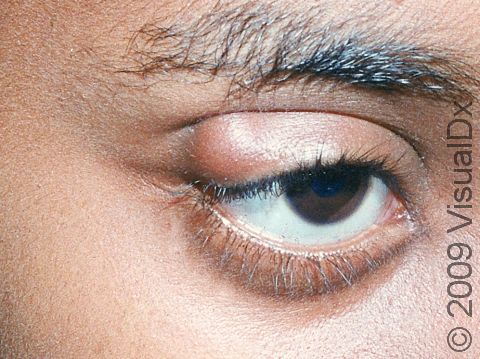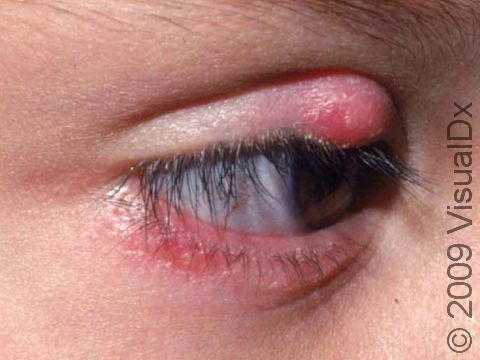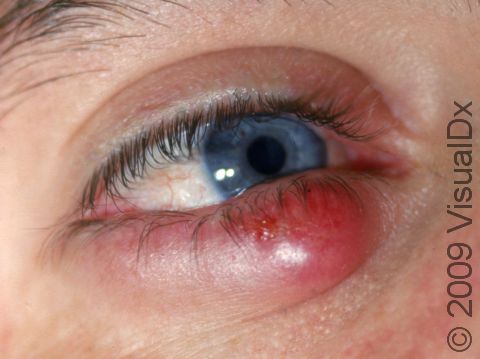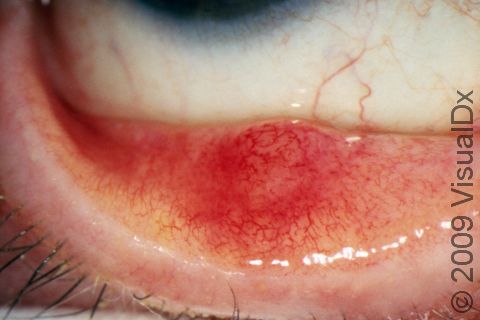Stye (Hordeolum and Chalazion)
Stye is a common word used for both hordeolum and chalazion, though it technically refers to hordeolum. These are two different kinds of small inflammation within the eyelid, and it is often difficult to tell the difference between them. A hordeolum is a blockage of glands on either the inner lid or the outer lid that leads to a quickly growing, painful, red swelling. A hordeolum can appear quickly, such as overnight. A chalazion is a similar blockage with inflammation, but it tends to grow slowly over weeks to months and is less tender than a hordeolum.
Who's At Risk?
Styes and chalazions are extremely common, and just about everyone will get one once in his or her lifetime. Some factors that may predispose you to these conditions are dry skin, seborrheic dermatitis, rosacea, stress, hormonal changes, wearing eye makeup (particularly if it is outdated), and not properly removing eye makeup.
Signs & Symptoms
One should be suspicious of having a stye when there is the rather rapid development of a pus-filled bump (pustule) or swelling on the edge of the eyelid or on the lid itself. Chalazions are more of a rounded lump and are harder in consistency.
Some of the things you may experience include:
- Pain
- Redness of the eye
- Discharge from the swelling
- Tenderness to touch
- Tearing
- Very mild blurring of vision
- Burning sensation
- Scratchy feeling in the eye
- Drooping of the eyelid
- Crusting of the eyelid edges
Self-Care Guidelines
Apply frequent (4–6 times daily) very warm compresses until there is no more drainage from the stye or chalazion. The compresses must be hot enough to help drain the growth yet not so hot as to burn the very delicate eyelid skin. It usually takes 7–10 days, at most, for the problem to resolve. Good lid hygiene is also mandatory. Over-the-counter ointments or drops have no treatment value.
Note: Recurring styes or chalazions without other related factors suggest possible serious disease. With the start of very warm compresses, the growth may get larger temporarily before draining.
Treatments
Treatment may involve any or all of the following:
- Surgical incision and drainage
- Injection of steroid into the growth
- Antibiotic ointments
- Antibiotic drops
- Oral antibiotics (especially if there is possible lid infection suspected)
- Treatment for underlying/contributing conditions such as dandruff, acne rosacea, psoriasis, etc
Visit Urgency
You should seek medical advice if:
- The eyelids are swollen shut.
- There is no improvement after using frequent very warm compresses for 10–14 days.
- There is pus or very thick drainage from the eye.
- Pain or tenderness is increasing despite compresses.
- The swelling is increasing beyond the first 2–3 days.
- The eyelid is hot to the touch.
- You develop a fever.
- Recurrences are frequent, especially at the same location.
- Progressive vision changes are experienced, including double vision.
Last modified on August 16th, 2022 at 2:44 pm

Not sure what to look for?
Try our new Rash and Skin Condition Finder



